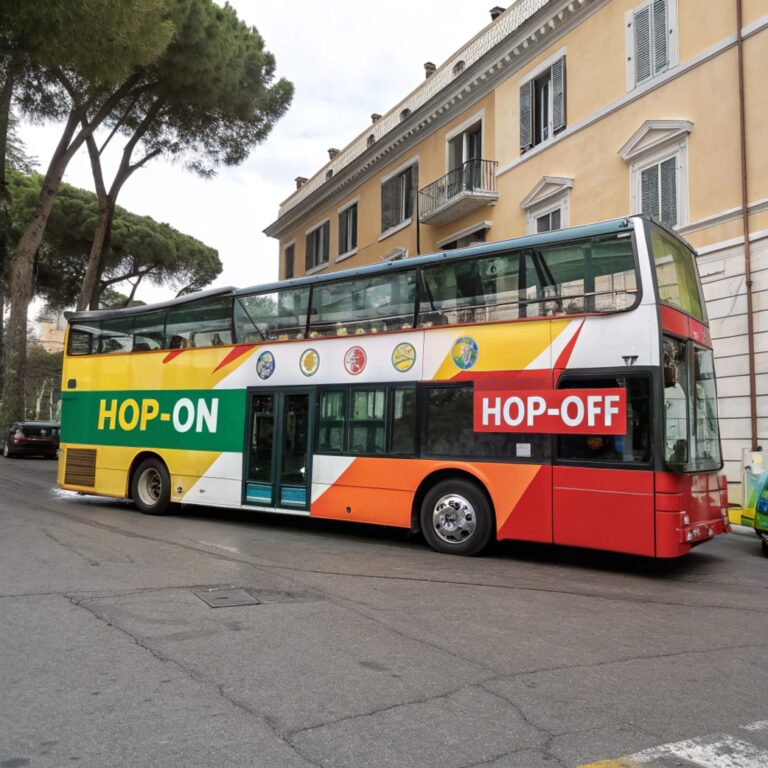
Rome Metro, Bus and Tram
Discover how to efficiently use public transport in Rome to explore the city with ease. Metro, bus and trams form a well-connected network, serving major tourist attractions such as the Colosseum, the Vatican, or the Trevi Fountain. With over 350 bus lines, 6 tram lines, and 3 metro lines, you can easily move from one site to another while avoiding traffic jams. Whether you are in Rome for a few days or a week, discover here how to use these means of transport to optimize your travel and fully enjoy your stay.
- Why Choose Public Transport in Rome?
- Rome’s Metro: Fast and Efficient
- Buses and Trams: Explore Every Corner of Rome
- Where to Buy Your Metro, Bus and Tram Tickets?
- How much does a ticket for public transport in Rome cost?
- Can the same ticket be used for the metro, bus, and tram?
- How to validate tickets on the metro, buses and trams?
- What is the frequency of buses, metros and trams in Rome?
- Are there metro lines that serve the main tourist attractions?
- Is public transportation safe in Rome, especially at night?
- Does public transport operate on public holidays and Sundays?
- How to plan your itinerary using public transport in Rome?
- Is public transport accessible to people with reduced mobility?
- Are there frequent checks on public transport in Rome?
- Tips for Public Transport in Rome
- Roma Pass and Omnia Card: Your Keys to Exploring Rome
To get around Rome using public transport, Google Maps is a valuable ally. But why not go even further? Discover our interactive tourist map of Rome, designed to accompany you at all times. It will allow you to quickly identify the essential sites around you and access detailed information about each place: its history, anecdotes, and our best tips to make the most of it.
Why Choose Public Transport in Rome?
- Affordable and Convenient: Public transport is the most economical and convenient way to discover Rome.
- Accessibility: Easily reach iconic sites and hidden gems.
- Experience Authentic Rome: Immerse yourself in the daily life of Romans.
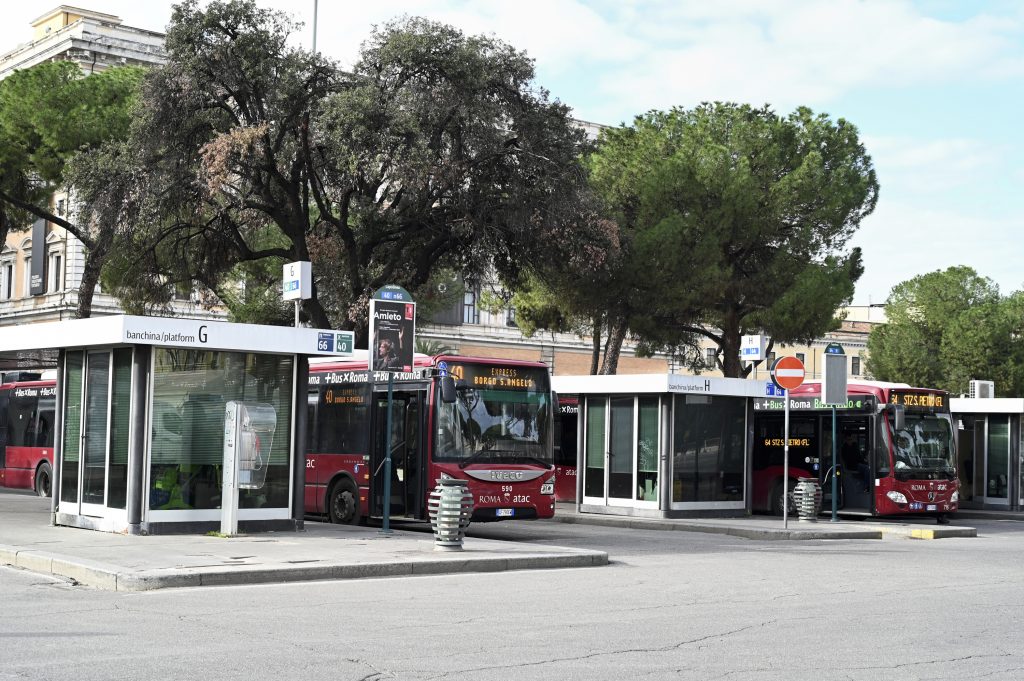
Rome’s Metro: Fast and Efficient
The Roman metro is your best friend for quickly reaching places like the Colosseum or the Vatican. There are three main lines:
- Line A (Orange): Runs from the Vatican to the east of Rome.
- Line B (Blue): Crosses the city from north to south, passing through Termini station.
- Line C (Green): Less useful for tourists, but convenient for some destinations.
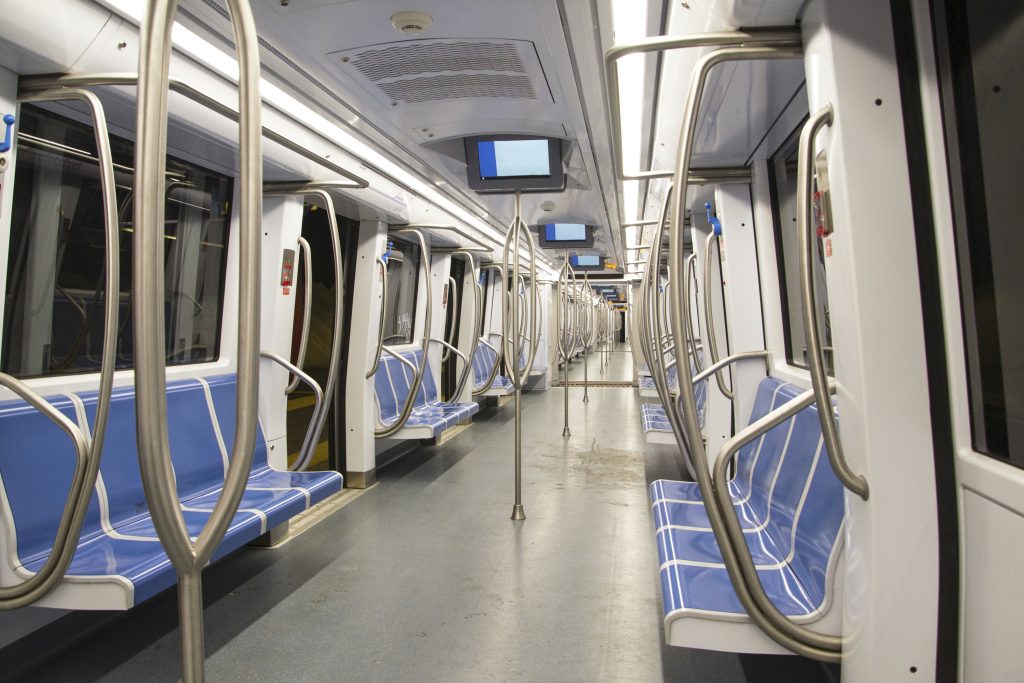
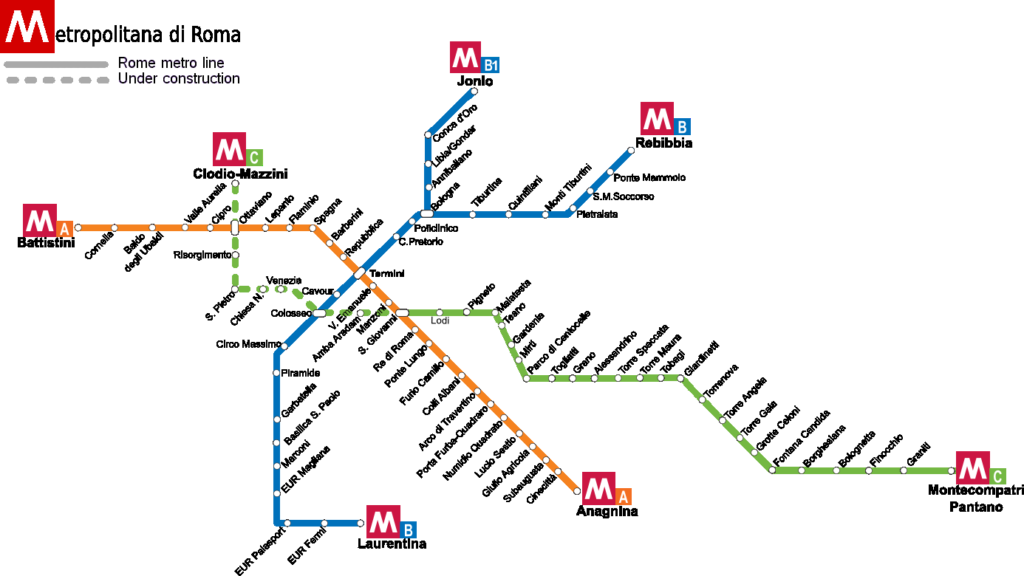
Below you will also find maps of public transport in Rome offered on the ATAC website:
Buses and Trams: Explore Every Corner of Rome
Rome boasts an extensive public transportation network, including approximately 350 bus routes serving the entire city and its suburbs. This network covers both tourist areas and residential neighborhoods. As for trams, the city has 6 tram lines. These lines offer an alternative to buses and the metro, serving some of the city’s main arteries as well as historical and residential areas. The tram network is less extensive than the bus network, but remains a convenient and pleasant option for getting around Rome.
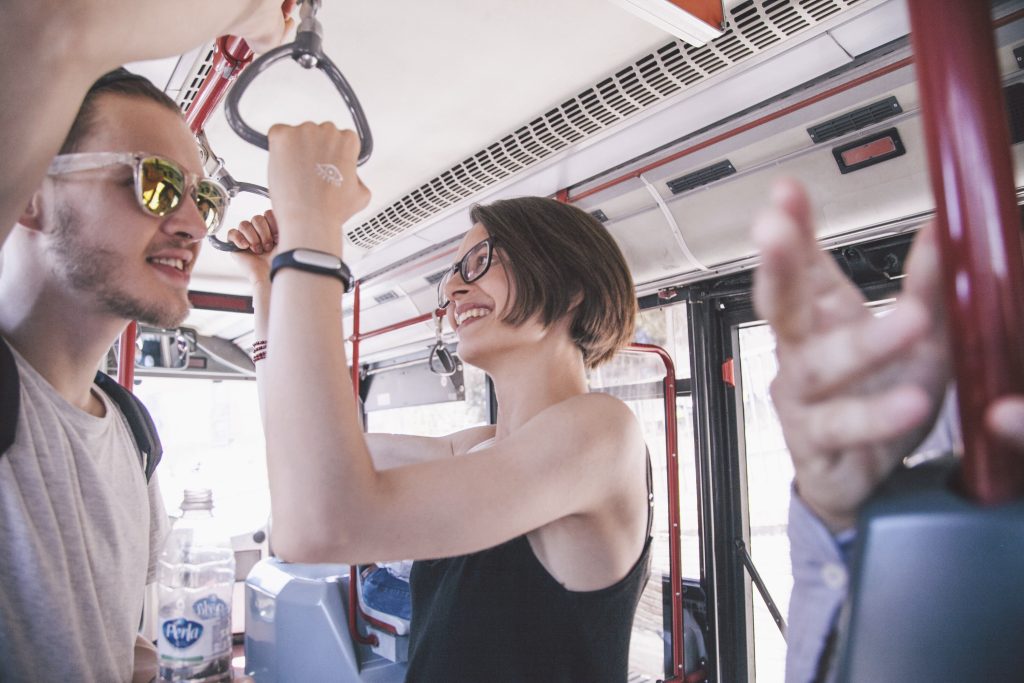
Where to Buy Your Metro, Bus and Tram Tickets?
- Metro Stations: Each station has ticket booths and vending machines.
- Tobacco shops (tabaccheries) and newsstands: You can also buy tickets at these small shops found throughout the city.
- From your smartphone: using a transport app like MyCicero or ATAC, which manages public transport in Rome
Tickets are valid for all types of transport (metro, bus, tram) and must be validated before boarding buses or trams, or at the gates in the metro.
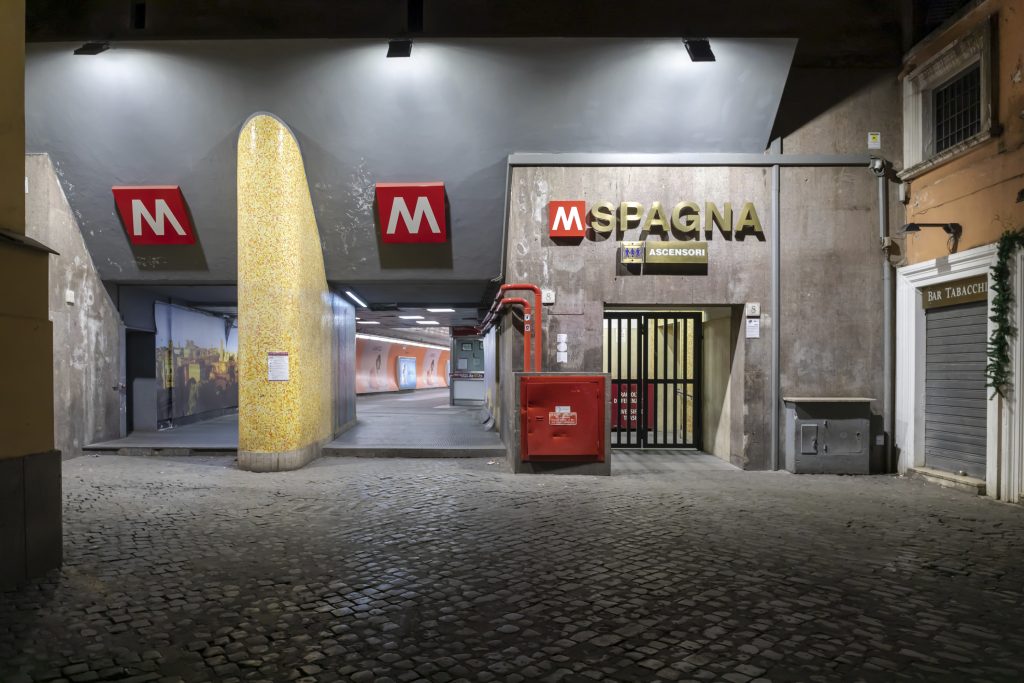
Did you know? There are tourist passes that give you unlimited access to public transport in addition to entry to major tourist sites. Depending on your planned itinerary, these passes can save you time and money. Public transport is notably included in the Roma Pass which you can buy online from our partner GetYourGuide but also the Omnia Card, marketed by Tiqets.
How much does a ticket for public transport in Rome cost?
A single ticket for public transport in Rome costs €1.50 and is valid for 100 minutes. It allows you to use buses, trams and the metro.
There are also daily tickets at €7, 48-hour passes at €12.50, 72-hour passes at €18, and weekly passes at €24.
These options are ideal for tourists who plan to use public transport extensively.
Can the same ticket be used for the metro, bus, and tram?
Yes, the same ticket is valid for the metro, bus, and tram in Rome. A standard €1.50 ticket allows for one metro journey and multiple bus and tram journeys for 100 minutes. It is important to validate the ticket on each bus or tram journey, or at the turnstile in the metro. Daily or weekly passes offer even more flexibility, allowing unlimited use of the three modes of transport for the duration of the ticket.
How to validate tickets on the metro, buses and trams?
On the metro, tickets must be validated at the automatic gates located at the entrance of each station before accessing the platforms. On buses and trams, you must insert the ticket into a small validation machine located inside the vehicle as soon as you board. Make sure to validate your ticket, as checks are frequent, and an unvalidated ticket may result in a fine.
What is the frequency of buses, metros and trams in Rome?
The frequency of buses, metros and trams in Rome varies depending on the time of day and day of the week. In general, metros run every 3 to 5 minutes during peak hours and every 10 minutes outside of peak hours. Buses and trams run every 10 to 20 minutes depending on the line. In the evening, services may be less frequent, with buses running approximately every 30 minutes. During the peak tourist season, frequencies may increase to meet demand.
Are there metro lines that serve the main tourist attractions?
Yes, the Rome metro serves several major tourist attractions. Line B takes you to the Colosseum, one of the busiest stations. Line A runs near the Trevi Fountain (Barberini station), the Spanish Steps (Spagna station), and the Vatican (Ottaviano station). Although Rome’s metro system is limited to three lines, it covers major sites, and you can supplement your journey with buses or trams to reach other locations.
Is public transportation safe in Rome, especially at night?
Generally, public transportation in Rome is safe, even at night. However, it’s recommended to remain vigilant, especially on crowded buses and metros, as pickpockets may be present, particularly around tourist attractions. At night, metros and some buses operate, but it’s advisable to avoid isolated stations or areas and travel in groups when possible. The ATAC network also offers night buses, identifiable by the letter “N” before the line number.
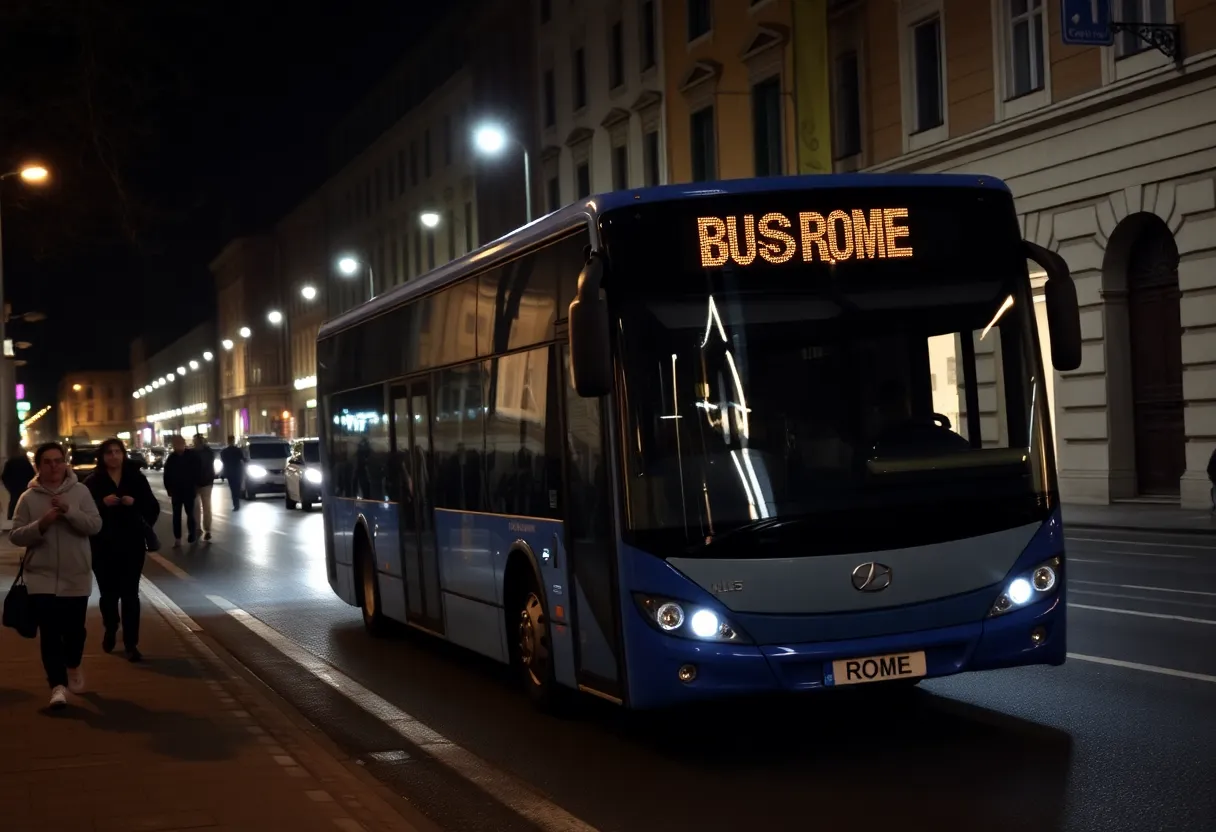
Does public transport operate on public holidays and Sundays?
Yes, public transport in Rome also operates on public holidays and Sundays, but with a reduced frequency compared to weekdays. The metro generally operates with a similar service to Sundays, with slightly longer intervals between trains. Buses and trams also follow a more spaced-out schedule, but main services remain available. It is advisable to check schedules on transport apps or websites before traveling on public holidays.
How to plan your itinerary using public transport in Rome?
Several options are available for planning your itinerary in Rome. You can use mobile apps like MyCicero or Moovit, which provide real-time information on bus, metro, and tram schedules and routes. Google Maps is also very convenient for planning trips using public transport, with accurate travel time estimations. Paper maps of the metro lines are also available at stations, useful for an overview of the network.
Our tip: the Tripwizy Rome app, in addition to offering a tourist guide to the main attractions to see in the city, offers an interactive map of the 3 metro lines. You can easily find the ideal route to get to the tourist sites of your choice from your accommodation.
Is public transport accessible to people with reduced mobility?
Rome is making efforts to make its public transport accessible, but not all buses, metros and trams are fully adapted. Many metro stations have elevators and ramps, but some older stations are still inaccessible. However, the majority of buses are equipped with ramps for wheelchairs, and there are spaces reserved for people with reduced mobility. It is advisable to check the accessibility of stations in advance or to use ATAC applications for real-time information.
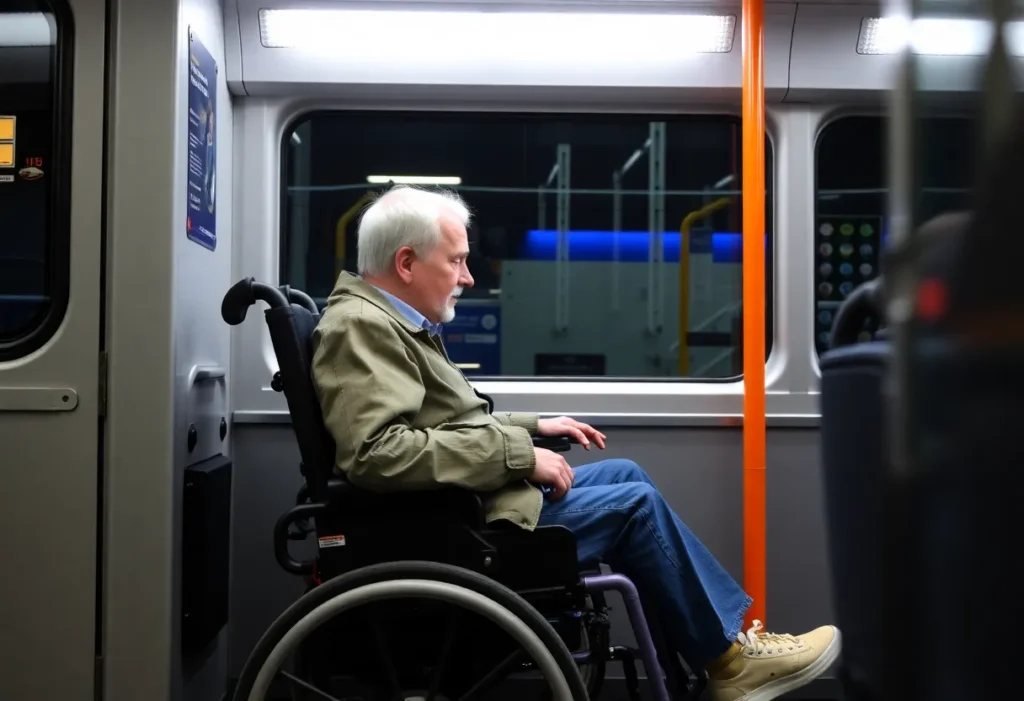
Did you know? For the 2025 Jubilee in Rome, expecting 35 million visitors, the city received €530 million from the Italian government to improve infrastructure (particularly the metro and tramway) and urban mobility. Read Eurocities’ article on the Jubilee to learn more.
Are there frequent checks on public transport in Rome?
Yes, there are frequent checks on public transport in Rome, whether on buses, trams and metro stations. Inspectors can board at any time to check that passengers have validated their tickets. These checks are generally random, but they can be more frequent in tourist areas and at certain times of the day. If you are caught without a validated ticket, you risk a fine that can be quite high (€100). It is therefore important to always have a valid ticket and validate it correctly as soon as you board.
Tips for Public Transport in Rome
- Use Google Maps: it will offer you optimized routes. You can also go to the official website of the public transport company of Rome – ATAC ROMA.
- Opt for the Roma Pass or the Omnia Card: These passes give you unlimited access to public transport and entry to the main tourist sites. Buy your Roma Pass here or get the Omnia Card from our partner Tiqets.
- Plan ahead: Buses can be unpredictable, so check the schedules before you leave.
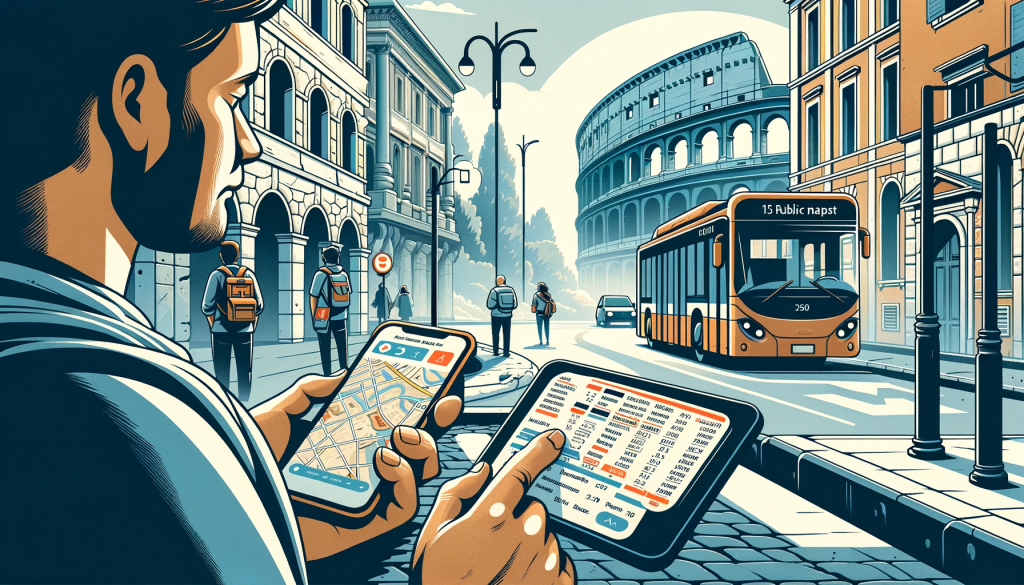
Roma Pass and Omnia Card: Your Keys to Exploring Rome
These 2 tourist passes can save you time and money. In addition to giving you access to tourist sites, their offers include unlimited access to Rome’s public transport.
We therefore advise you to study the interest of these passes for your stay:
- Roma Pass : Includes public transport, free access to two museums.
- Omnia Card : Offers all the benefits of the Roma Pass, plus access to the Vatican and other remarkable tourist sites.
With these passes, you can travel freely and save money on attractions.
To learn more, see our article dedicated to Essential Tourist Passes in Rome.
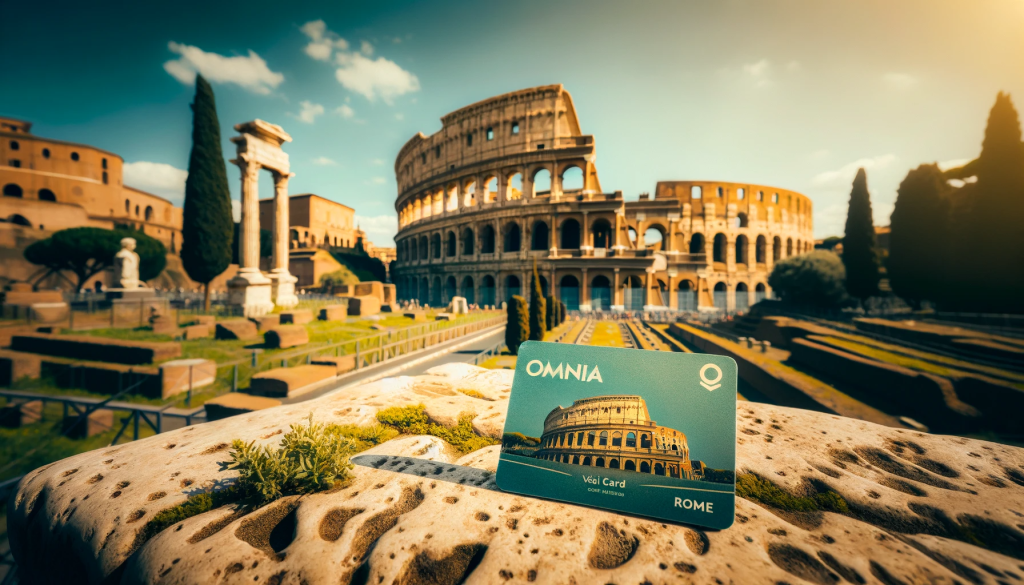
With this advice, you’re ready for an amazing experience in Rome. Let yourself be carried away by its charm and history, all while enjoying easy and affordable mobility.
If you have any suggestions or experiences to share, feel free to leave a comment below. Your comment can be invaluable to future travelers. Share your tips, tricks, and discoveries to enrich the traveler community.
Ready to use public transport in Rome? How about discovering in more detail what the city of Rome has to offer? And why not discover the city outdoors, comfortably seated in a Hop-On Hop-Off Bus with an audio guide in your ears?



